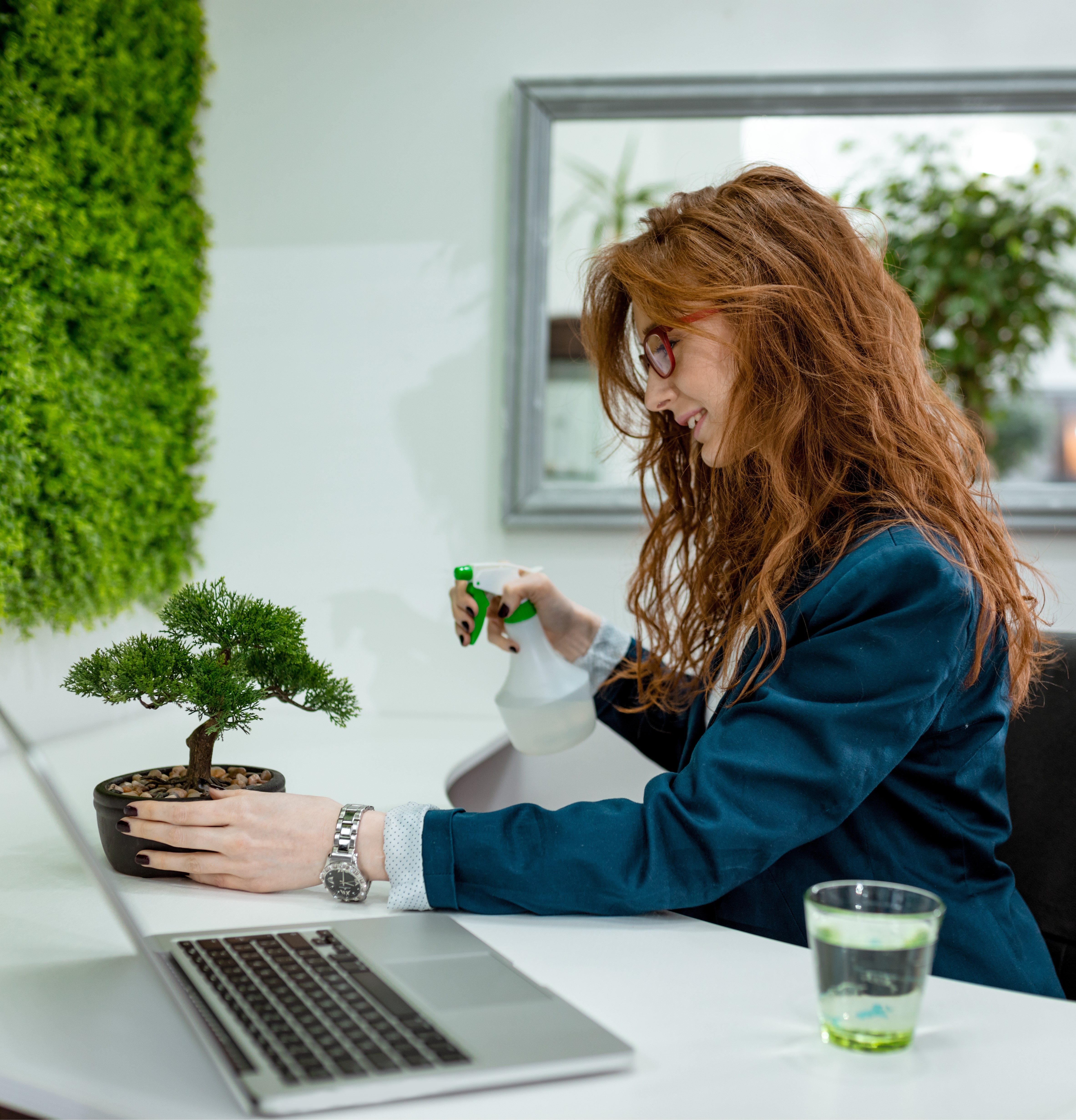The integration of plants into office spaces has become increasingly popular in recent years, driven by the desire to create sustainable workplaces. Sustainability in the workplace goes beyond environmental concerns and encompasses social and economic dimensions as well. By incorporating plants into office design, businesses can achieve sustainability goals across these various dimensions. This blog explores how plants contribute to achieving sustainability goals in offices.
Defining Sustainability in the Workplace
Sustainability in the workplace involves a holistic approach to resource management and business operations. It aims to balance environmental, social, and economic responsibilities. Businesses strive to minimise their negative impact on the environment, promote ethical and responsible practices within the workplace, and ensure long-term economic viability. By integrating plants into office spaces, companies can address these sustainability objectives.
The Role of Plants in Environmental Sustainability
Plants play a crucial role in maintaining a healthy and sustainable environment. They act as natural air purifiers, absorbing harmful pollutants and releasing fresh oxygen. This process significantly improves indoor air quality, reducing the risk of respiratory ailments and other health problems for office occupants. Additionally, plants can help regulate humidity levels and reduce carbon dioxide emissions, contributing to the mitigation of climate change.
Plants and the Environment
Plants and Energy Efficiency
In addition to their environmental benefits, plants also contribute to energy savings in the workplace. Their presence can naturally cool the office space, reducing the need for air conditioning, particularly during warmer months. Living walls and green roofs, which incorporate plants into building structures, provide insulation and further reduce energy consumption. These energy-efficient features not only support sustainability goals but also lead to cost savings for businesses.
Enhancing Workplace Well-being and Productivity
Numerous studies have demonstrated the positive impact of plants on workplace well-being and productivity. The presence of plants in office spaces has been shown to reduce stress levels, improve concentration, and increase creativity among employees. A more pleasant and inviting work environment, encouraged by the presence of plants, can also enhance employee morale and satisfaction. By creating a healthier and more stimulating workplace, companies can improve overall productivity and employee retention.
Biophilic Design: Integrating Nature into Office Spaces
Biophilic design is an approach that emphasises the integration of natural elements into built environments, aiming to create a harmonious connection between people and nature. In the context of office spaces, biophilic design incorporates various elements such as living walls, indoor gardens, potted plants, and natural light. These elements promote a sense of well-being and connection to nature among employees. Biophilic design principles align with sustainability goals by creating healthier and more sustainable office spaces.
Sustainability Beyond the Physical: Plants as a Symbol
Plants in the office can serve as more than just physical additions to the workspace. They can also act as symbols of sustainability and environmental responsibility. The presence of thriving plants in the office serves as a constant reminder of the importance of environmental stewardship. Furthermore, office plants can be used as educational tools, raising awareness about environmental issues, and encouraging sustainable practices among employees.
Case Studies
Several businesses worldwide have successfully integrated plants into their offices, reaping the associated sustainability benefits. For example, Google’s offices in Mountain View, California, feature extensive indoor gardens and living walls, contributing to a healthy and productive work environment. Similarly, Aetna’s headquarters in Hartford, Connecticut, incorporate a variety of plants, which have been shown to improve air quality and reduce employee absenteeism. These case studies highlight the positive impact that plants can have on sustainability goals within the workplace.
Challenges and Considerations for Plants in Offices
While incorporating plants into office spaces offers numerous benefits, it is essential to consider and address certain challenges. Space constraints and the need for specialised care are common challenges in maintaining office plants. However, these obstacles can be overcome with careful planning and the selection of appropriate plants. Low-maintenance varieties, such as succulents or cacti, can thrive in limited spaces and require minimal care. Additionally, professional plant care services can be employed to ensure the health and vitality of plants in larger office settings.
Conclusion
Incorporating plants into office spaces is a multifaceted approach to achieving sustainability goals. Plants contribute to environmental sustainability by improving indoor air quality, reducing energy consumption, and mitigating climate change. They also enhance workplace well-being and productivity, promoting a more pleasant and inviting work environment. Additionally, plants serve as symbols of sustainability, promoting a culture of environmental responsibility among employees. As businesses continue to embrace sustainability principles, integrating plants into office spaces can play a significant role in creating a healthier, more productive, and environmentally conscious workplace. By harnessing the benefits of plants, companies can create a sustainable office environment that benefits both employees and the planet.





